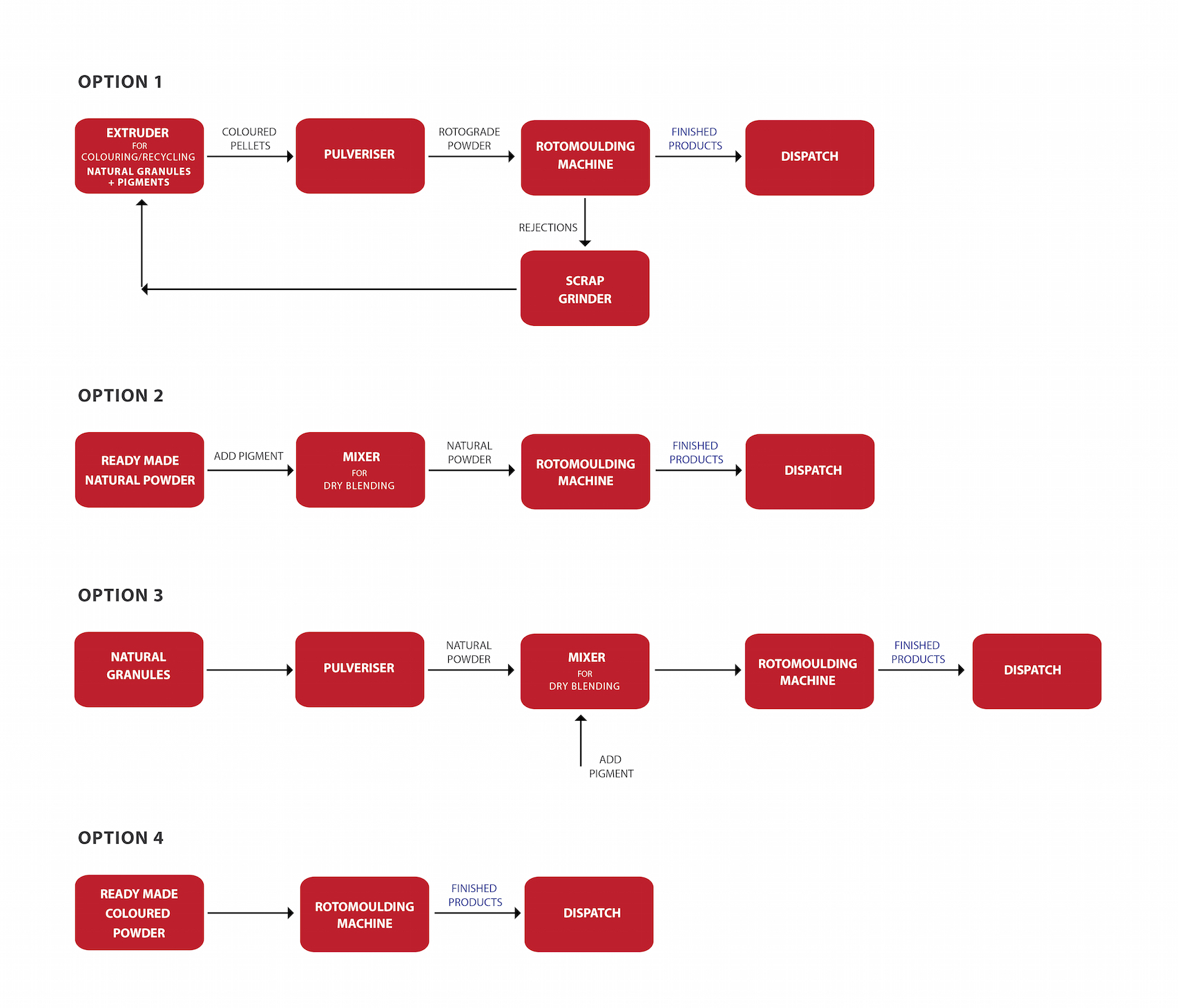The Process
Rotational Moulding has literally reshaped the entire plastics industry. Without it, neither would we have
many
of the products we have today, nor would we enjoy the quality, durability, and versatility we have come to
expect from plastic products.
This process is used primarily to create seamless, stress-free, hollow (or foam filled) single-piece
products such as :
- Water and Food Storage Tanks ( up to 50,000 litres )
- Automotive Fuel Tanks, Fenders, Canopies etc.
- Furniture Items
- Portable Toilets
- Road Safety and Construction Equipments
- Material Handling Equipments
- Litter Bins
- Rowing Boats, Canoes and Kayak Hulls
- Planters and Decorative Items
- Toys and Pet houses
- Playground equipments
Steps in Rotational Moulding
1) Polymer is placed into a mould.
2) The mould is closed and rotated biaxially.
3) The mould is heated in an oven while rotating and the polymer gradually melts and
‘lays-up’ on inside of the mould.
4) Once the polymer has fully melted, the mould is moved to a cooling station and cooled
usually with air.
5) As the mould cools, the part solidifies. When the material has finally cooled
sufficiently to release away from the mould surface, the product is de-moulded and polymer is fed into
the mould for next cycle.



Polymer Preparation
More often than not the powdered resin is Polyethylene (PE) as 96% of rotomoulded products are made from
this
material. Other compounds such as polyvinyl chloride (PVC), Polypropylene (PP) and nylons are also used.

